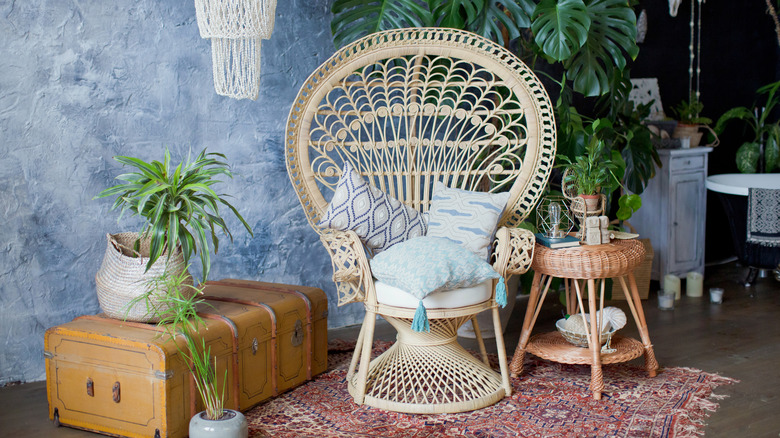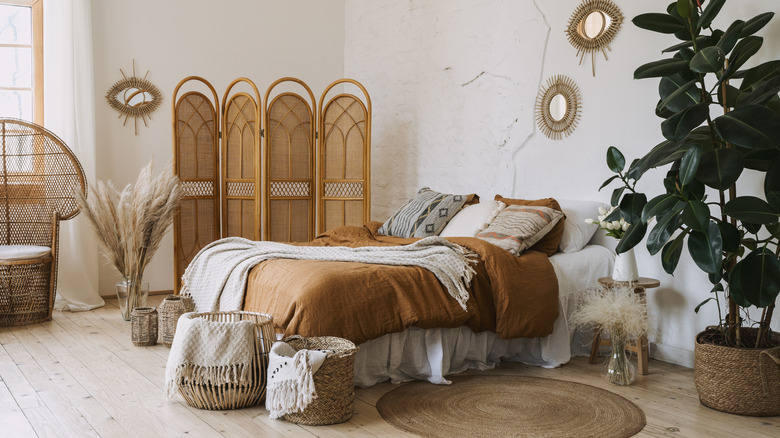Why Wicker Furniture Is Overrated
Try scrolling interior design Instagram these days without running into the towering, regal presence of the coveted peacock chair. You can't. Often paired with plush pillows and vintage throws, it's essentially become the holy grail of contemporary bohemian decor. And while its shape is striking and the vintage vibes are fun, the problem with the peacock chair is that it opens the door to the rest of wicker wares — coffee tables, room dividers, etc. — resulting in hundreds of millennial living rooms filled with what is essentially patio furniture.
Wicker furniture first surged in popularity in the early 1900s alongside the demand for verandas and shaded porches, according to Vox. Long before homes were air-conditioned, the woven texture of wicker was breathable and light. From then on, it became synonymous with summer and tropical escapes — used in resorts, airports, and the like. But now that wicker has made its way into New York high-rises, something's been lost in translation. And let's be honest: As a material, wicker isn't very practical at all.
The case against wicker furniture
The reality of actually using — and not just looking at or Instagramming — wicker furniture is this: It's just not comfortable. Try lounging on a wicker chair without being poked or scratched by an errant strand. Your clothing is at risk of being caught or snagged, too. And if you're planning on using wicker for everyday seating or dining, don't count on it staying in picture-perfect condition for very long.
"Are you wanting to buy something that is gonna look great for a few years?" New York-based interior designer Lucy Harris told The Spruce. "There are pieces [of wicker] that were designed in the mid-century period that are just as fresh and beautiful today, but obviously there are some that are going to look more trendy and the design isn't going to be as long-lasting."
If you have pets, you might want to rethink bringing wicker furniture into your home. "Wicker furniture makes a great scratching or chewing post," added Texas interior designer Audrey Konkel. It's also very difficult to clean (read: food morsels forever hidden in its many crevices), and if your style changes even in the slightest, wicker isn't very adaptable. Fabric can be reupholstered. Wood can be refinished. But wicker will always look like wicker.
So while it's totally fine to appreciate the boho moment and maybe even grab a peacock chair if you're lucky, you may want to think twice before taking the fascination with wicker furniture any further.

